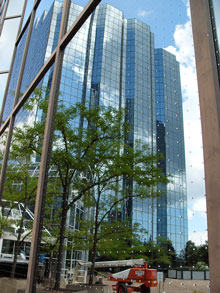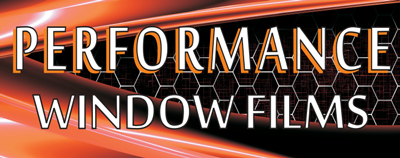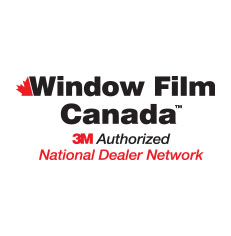More About Bird Collisions
Discover the realities of bird collisions in our manmade environments
Some of the most beautiful buildings in our towns and cities feature many windows that enhance design as well as life for the people who live and work within them. While these windows provide people with natural light and attractive cityscapes, they also take a toll on the birds who share our environment.
 Approximately 1 billion bird deaths take place each year. This incredible number represents 10% of North America’s birds and therefore has the potential to seriously impact their overall population. Because windows and glass don’t exist in birds’ natural habitats, they are not capable of differentiating clear glass from the air they navigate. This inability to see the glass causes them to collide with the windows at full speed, which is most often substantial enough to kill them.
Approximately 1 billion bird deaths take place each year. This incredible number represents 10% of North America’s birds and therefore has the potential to seriously impact their overall population. Because windows and glass don’t exist in birds’ natural habitats, they are not capable of differentiating clear glass from the air they navigate. This inability to see the glass causes them to collide with the windows at full speed, which is most often substantial enough to kill them.
The vast majority of collisions are associated with migrating birds, occurring in the spring and even more in the fall due to immature birds being unfamiliar with their surroundings. Migrating birds are aggressively seeking food in the form of insects and the reflected image of trees in the glass represents an attractive food source. Birds that reside in urban areas for the summer are also prone to collisions.
Not all buildings pose the same threat to birds. Organizations such as FLAP (Fatal Light Awareness Program), the organization that spearheads bird deterrent initiatives in Canada, have been able to identify the risk posed by a particular structure and provide recommendations to building owners and managers.
What Has Been Tried in the Past
Markers applied between the glass panes or on the interior surface (UV reflective patterns, printed frit, etc.)
The exterior surface of glass will reflect the sky and foliage, whether the window is clear, tinted, or incorporates a reflective coating. While collisions may be reduced with interior markers, they will be much less effective than an exterior application. Glass that incorporates interior markers is also more than twice the price of untreated glass.
Opaque perforated film applied to the exterior glass surface
The application of opaque perforated film to deter birds essentially looks like a white wall from the outside (unless it is printed) and therefore it dramatically changes the look of a building or home. The opaque film covers more than 40% of the glass area and the effect is like looking through a dense screen. It is highly effective in reducing collisions but its appearance limits its utilization on most retrofit projects.
Labels or images applied to the exterior surface of the glass
Images of birds of prey, UV reflective labels or cut patterns can be applied to the exterior glass surface. In the case of images or labels they typically have large spaces between them, which have proven to be ineffective since the birds try to fly between the markers. If they are close together, they tend to dramatically alter the building appearance and degree of clear viewing for occupants.
Netting draped in front of windows
While effective at either deterring bird strikes or catching birds before they strike the glass, this option is unsightly from inside and out. It typically is designed for a temporary installation associated with the spring and fall migrations.
Ceramic frit applied to the exterior surface
Permanent markers in the form of ceramic frit have been applied to the exterior surface. One such pattern consists of rows of vertical dots providing up to 94% clear visibility for new construction. While this has proven to be effective for deterring birds, it dramatically changes the appearance of a building and can be costly if the frit deteriorates faster than the sealed units.
What can you do about bird collisions?
The challenge has been to reduce bird collisions and enhance rather than detract from the overall appearance of a building. Feather Friendly® Technologies, in association with Convenience Group in Toronto, has been working closely with the leading authorities on bird collisions for over 10 years and developed a number of innovative patent pending technologies that accomplish these and other objectives.


